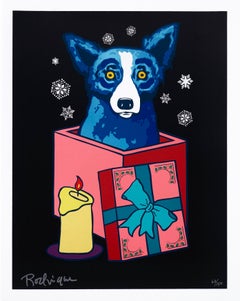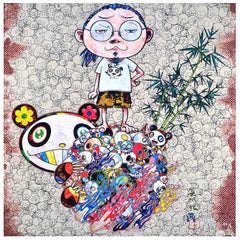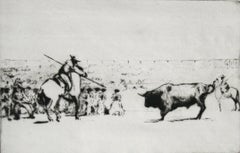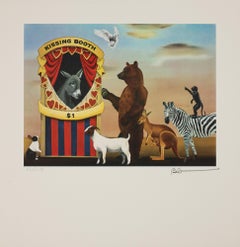Small Animal Prints
Early 2000s Pop Art Figurative Prints
Screen
1950s Folk Art Animal Prints
Paper, Woodcut
2010s Contemporary Abstract Prints
Offset
1910s Modern Animal Prints
Drypoint
1960s Modern Animal Prints
Etching
21st Century and Contemporary Contemporary Prints and Multiples
Paper, Lithograph
1770s Naturalistic Animal Prints
Engraving
1970s Pop Art Animal Prints
Offset
2010s Contemporary Animal Prints
Etching
Late 20th Century American Impressionist Animal Prints
Aquatint
1970s Contemporary Figurative Prints
Lithograph, Paper
2010s Pop Art Portrait Prints
Canvas, Mixed Media, Giclée
1980s Contemporary Figurative Prints
Lithograph
1990s Realist Landscape Prints
Etching
1970s Contemporary Portrait Prints
Lithograph
Early 20th Century Modern Animal Prints
Woodcut
2010s Animal Prints
Paper
Late 20th Century Landscape Prints
Lithograph
21st Century and Contemporary Contemporary Prints and Multiples
Paper, Lithograph
1990s Contemporary Animal Prints
Screen
20th Century Realist Figurative Prints
Archival Pigment
Mid-19th Century Naturalistic Animal Prints
Lithograph
Early 20th Century Modern Figurative Prints
Woodcut
Late 20th Century Modern Animal Prints
Etching, Aquatint
1970s Surrealist Figurative Prints
Lithograph
1960s Modern Animal Prints
Lithograph
2010s Contemporary Animal Prints
Woodcut
1860s Victorian Animal Prints
Watercolor, Lithograph
Late 19th Century Naturalistic Figurative Prints
Etching
1870s Modern Figurative Prints
Drypoint, Etching
21st Century and Contemporary Contemporary Landscape Prints
Paper, Etching, Aquatint
21st Century and Contemporary Contemporary Animal Prints
Paper, Etching
21st Century and Contemporary Contemporary Prints and Multiples
Paper, Lithograph
1990s Modern Animal Prints
Etching
2010s Contemporary Animal Prints
Screen
1960s Modern Animal Prints
Lithograph
1920s Animal Prints
Paper
1970s Folk Art Animal Prints
Etching
1770s Old Masters Animal Prints
Watercolor, Laid Paper, Engraving, Intaglio
2010s Abstract Animal Prints
Screen, Paper
1970s American Realist Animal Prints
Screen
Early 2000s Contemporary Color Photography
Photographic Film, Photographic Paper, Color, Archival Pigment
18th Century Old Masters Figurative Prints
Etching
18th Century Old Masters Figurative Prints
Etching
Late 19th Century Animal Prints
Paper
1930s American Modern Animal Prints
Screen
1990s Pop Art Animal Prints
Lithograph, Offset
21st Century and Contemporary Contemporary Animal Prints
Paper, Etching
21st Century and Contemporary Abstract Animal Prints
Giclée
Late 19th Century Naturalistic Animal Prints
Lithograph
1940s Animal Prints
Etching
1920s Landscape Prints
Lithograph
21st Century and Contemporary Contemporary Animal Prints
Paper, Etching
1950s Pop Art Animal Prints
Lithograph, Offset
1930s Abstract Expressionist Animal Prints
Engraving, Drypoint
1920s Landscape Prints
Lithograph
21st Century and Contemporary Contemporary Prints and Multiples
Paper, Lithograph
1970s Surrealist Animal Prints
Archival Paper, Etching
21st Century and Contemporary Contemporary Prints and Multiples
Paper, Lithograph
1950s Modern Animal Prints
Lithograph



